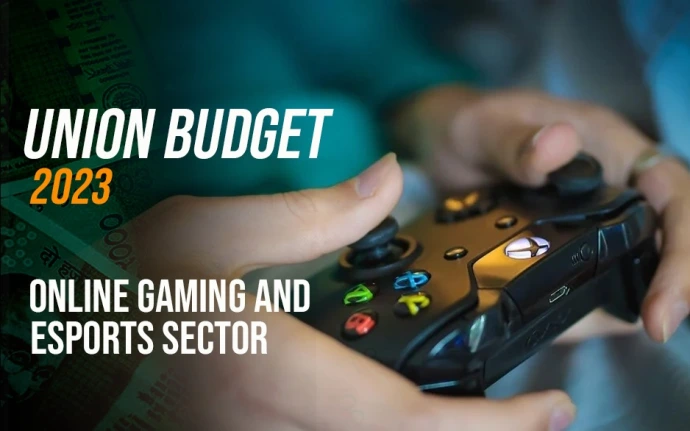Changing the 'Game'
- Rohit Agarwal
The gaming sector has shown massive growth potential. It has become an integral part of the Web3 revolution as well

While the COVID-19 induced pandemic of 2020 took a massive toll on people’s physical as well as mental health, it provided them with something that they otherwise don’t get enough during the normal rigmarole of life: free time. Stuck indoors and normal schedules thrown out of the window, most had no clue how to best utilize this once-in-a-lifetime freebie.
While some chose to binge watch movies and series added three-and-a-half years ago to their ‘to watch’ list on their favourite OTT platforms, a large chunk of the population took to gaming.
According to a report by a mobile advertising technology company InMobi, 45 per cent Indians started playing mobile games due to the pandemic. The report stated there was a 1.5 times increase in unique user count from February (pre-pandemic) to December (post-pandemic) 2020. Gaming was not restricted to the youth as people belonging to the age group of 45 to 54 became avid gamers after the onset of the pandemic. The report suggests that only 10 per cent of gamers were aged 18 to 24, while the majority of the gamers belonged to the 25 to 45-plus age group.
While some chose to binge watch movies and series added three-and-a-half years ago to their ‘to watch’ list on their favourite OTT platforms, a large chunk of the population took to gaming.
According to a report by a mobile advertising technology company InMobi, 45 per cent Indians started playing mobile games due to the pandemic. The report stated there was a 1.5 times increase in unique user count from February (pre-pandemic) to December (post-pandemic) 2020. Gaming was not restricted to the youth as people belonging to the age group of 45 to 54 became avid gamers after the onset of the pandemic. The report suggests that only 10 per cent of gamers were aged 18 to 24, while the majority of the gamers belonged to the 25 to 45-plus age group.
The gaming space has shown massive growth potential. Gaming has become an integral part of the Web3 revolution as well. Not only that, but gaming has also become a potential career option for a lot of gaming enthusiasts. The space has witnessed an uptick in the number of overall gamers as well.
“Metaverse, AI, and big data trends, as well as the incorporation of blockchain, crypto, and NFTs in revenue models that enable in-game monetisation, have improved the industry and made the prospect of profiting from it very appealing to users. As industry veterans begin to see growth and profit from the industry, investors are looking inwards into the gaming industry to increase their share of the pie and profit from the growth,” said Animesh Agarwal, founder and CEO, 8Bit Creatives.
According to a report by a gaming and interactive media fund, Lumikai, India’s gaming market hit $2.6 billion mark in 2022 and is projected to reach $8.6 billion by 2027. The report also noted that India has seen three gaming unicorns, more than six strategic exits, and one successful IPO. Indian gaming companies have raised $2.8 billion from domestic and global investors 2017 and 2022. Funding is up 380 per cent from 2019 and up 23 per cent from 2020 in 2022.
“Indian gamers have started paying for games. Up until a few years back, the narrative was India doesn’t pay for games or Indians don’t play games; that narrative has shifted. We now see both global funds and domestic funds as well as large financial and strategic advisors partake in the games industry in India. People have realized not only there is domestic consumption, but there is enough depth and breadth in the ecosystem to warrant capital that can be deployed and then yield a return which has become very evident in the market data,” said Salone Sehgal, founding general partner, Lumikai.
E-sports has also come to the fore. The growth of e-sports has been unprecedented as Sri Lanka became the first south Asian country to recognize e-sports as a sport in 2019. China followed as investors have been drawn to the opportunity for growth in the sector that is still relatively new. According to a 2021 report by venture capital firm Sequoia and Boston Consulting Group, the gaming market in the country concerning global gaming market in India was one per cent whereas the US and China had 23 per cent and 26 per cent, respectively, as of 2020. The compounded annual growth rate of the gaming market in India from 2017 to 2020 has been 38 per cent.
“Battle Royale is the genre of games that has picked up pace in the last few years, and after the ban of the two major Battle Royale titles, the community is looking for something similar-yet-equally-exhilarating to move ahead with. A lot of news around the return of one of the popular Battle Royale games in this coming year has been rumoured, and I do expect more Battle Royale games back in India,” said Nauman Mulla, co-founder and COO, STAN, a fan engagement platform on Web3.
E-sports was recognized by the ministry of sports and youth on 27 December under the ‘multi-sport’ category while the Indian gaming sector is also creating massive shockwaves in the Web3 sector. Gaming is becoming an integral part of the Web3 ecosystem with blockchain becoming all the rage in contemporary times.
“Web3 gaming rewards players for the time and effort they have spent in gameplay and makes them the true owners of their in-game assets (coins, tokens, drops, skins, etc.). They are free to trade them without worrying about loss of privacy, loss of possession, or depending on a third party to approve their access to assets. For developers too, it opens up the possibility of getting a small percentage of every in-game transaction which is recorded on the blockchain, bypassing the need for building and releasing intrusive and frequent updates that may ruin the audience experience. This evolution of in-game economies allows different entities and players to bring healthy liquidity to the gaming world,” said Piyush Kumar, founder and CEO, Rooter, a gaming and e-sports content platform.
There has been a clear cultural shift in terms of gaming. Earlier, it was perceived as a waste of time by parents. However, parents have recognized gaming as a potential means of earning which has increased the number of gamers in the country.
“It’s a mix of many factors. Firstly, since a lot of gaming events have finally started offline, parents can visit and witness the scale of gaming. Secondly, parents are noticing the career path and monetary potential of e-sports players and content creators, which is making them believe there is scope and money. Thirdly, the government is taking more interest in e-sports and is recognising its potential, which builds confidence for the parent,” said Rohit Agarwal, founder and director, Alpha Zegus, a marketing agency specializing in the domains of gaming and lifestyle.
The rise of the gaming sector has been unreal and the sector has been touted to better the numbers it registered in 2022. Gaming has been getting recognition in the ecosystem and with the acknowledgement of e-sports by the Union government, it is only set to grow from there.

